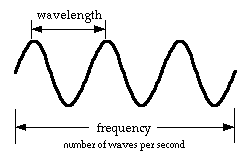Tuesday, June 1, 2010
Greyson Chance ♥
Reasons to recycle :)
Recycling
There are many different reasons and advantages of recycling old materials to turn into new, similar products.
Recycling benefits relate to many different areas, some of which could greatly improve the air we breathe, and the environment.Some of the main reasons why we should all recycle more are split up under the below headings.
Conservation
All man-made products incorporate raw materials to create the finished product. This involves harvesting the earth's natural resources (e.g. wood, metal) in order to acquire the raw materials.
Deforestation is a prime example of how harvesting natural resources is harming the environment. This could be reduced if we recycle more paper and old wooden products.
Energy Saving
Recycling reduces the amount of energy needed to create a new, similar product. If we didn't recycle paper, more trees would have to be chopped down, transported, and manufactured into the finished product.
This reason why you should recycle is a very important one, as energy conservation is one of the key ingredients for the fight against climate change.
Reduce Pollution
 Tied in with energy saving, is the reduction of pollution as a result of manufacturing processes becoming more efficient.
Tied in with energy saving, is the reduction of pollution as a result of manufacturing processes becoming more efficient.
Any reduction in CO2 or other harmful gases is not only a key ingredient for the fight against climate change, but a key ingredient for cleaning the air we breathe.
If we can reduce pollution levels from the manufacturing industry by a significant level, this could have a positive impact on our health.
Landfill Reduction
The more we recycle, the more we can help to reduce the burden on local and national landfill sites. As population levels increase, we will need to find more landfill sites, which will harm the surrounding environment and wildlife.
This is another important reason why we should recycle more, in order to reduce the impact landfills have on the surrounding environment.
Why is the sky blue?
THE ATMOSPHERE
The atmosphere is the mixture of gas molecules and other materials surrounding the earth. It is made mostly of the gases nitrogen (78%), and oxygen (21%). Argon gas and water (in the form of vapor, droplets and ice crystals) are the next most common things. There are also small amounts of other gases, plus many small solid particles, like dust, soot and ashes, pollen, and salt from the oceans.
The composition of the atmosphere varies, depending on your location, the weather, and many other things. There may be more water in the air after a rainstorm, or near the ocean. Volcanoes can put large amounts of dust particles high into the atmosphere. Pollution can add different gases or dust and soot.
The atmosphere is densest (thickest) at the bottom, near the Earth. It gradually thins out as you go higher and higher up. There is no sharp break between the atmosphere and space.
LIGHT WAVES
Light is a kind of energy that radiates, or travels, in waves. Many different kinds of energy travel in waves. For example, sound is a wave of vibrating air. Light is a wave of vibrating electric and magnetic fields. It is one small part of a larger range of vibrating electromagnetic fields. This range is called the electromagnetic spectrum.
Electromagnetic waves travel through space at 299,792 km/sec (186,282 miles/sec). This is called the speed of light.

The energy of the radiation depends on its wavelength and frequency. Wavelength is the distance between the tops (crests) of the waves. Frequency is the number of waves that pass by each second. The longer the wavelength of the light, the lower the frequency, and the less energy it contains.
COLORS OF LIGHT
Visible light is the part of the electromagnetic spectrum that our eyes can see. Light from the sun or a light bulb may look white, but it is actually a combination of many colors. We can see the different colors of the spectrum by splitting the light with a prism. The spectrum is also visible when you see a rainbow in the sky.
 |
The colors blend continuously into one another. At one end of the spectrum are the reds and oranges. These gradually shade into yellow, green, blue, indigo and violet. The colors have different wavelengths, frequencies, and energies. Violet has the shortest wavelength in the visible spectrum. That means it has the highest frequency and energy. Red has the longest wavelength, and lowest frequency and energy.
LIGHT IN THE AIR
Light travels through space in a straight line as long as nothing disturbs it. As light moves through the atmosphere, it continues to go straight until it bumps into a bit of dust or a gas molecule. Then what happens to the light depends on its wave length and the size of the thing it hits.
Dust particles and water droplets are much larger than the wavelength of visible light. When light hits these large particles, it gets reflected, or bounced off, in different directions. The different colors of light are all reflected by the particle in the same way. The reflected light appears white because it still contains all of the same colors.
Gas molecules are smaller than the wavelength of visible light. If light bumps into them, it acts differently. When light hits a gas molecule, some of it may get absorbed. After awhile, the molecule radiates (releases, or gives off) the light in a different direction. The color that is radiated is the same color that was absorbed. The different colors of light are affected differently. All of the colors can be absorbed. But the higher frequencies (blues) are absorbed more often than the lower frequencies (reds). This process is called Rayleigh scattering. (It is named after Lord John Rayleigh, an English physicist, who first described it in the 1870's.)
WHY IS THE SKY BLUE?
The blue color of the sky is due to Rayleigh scattering. As light moves through the atmosphere, most of the longer wavelengths pass straight through. Little of the red, orange and yellow light is affected by the air.
However, much of the shorter wavelength light is absorbed by the gas molecules. The absorbed blue light is then radiated in different directions. It gets scattered all around the sky. Whichever direction you look, some of this scattered blue light reaches you. Since you see the blue light from everywhere overhead, the sky looks blue.
